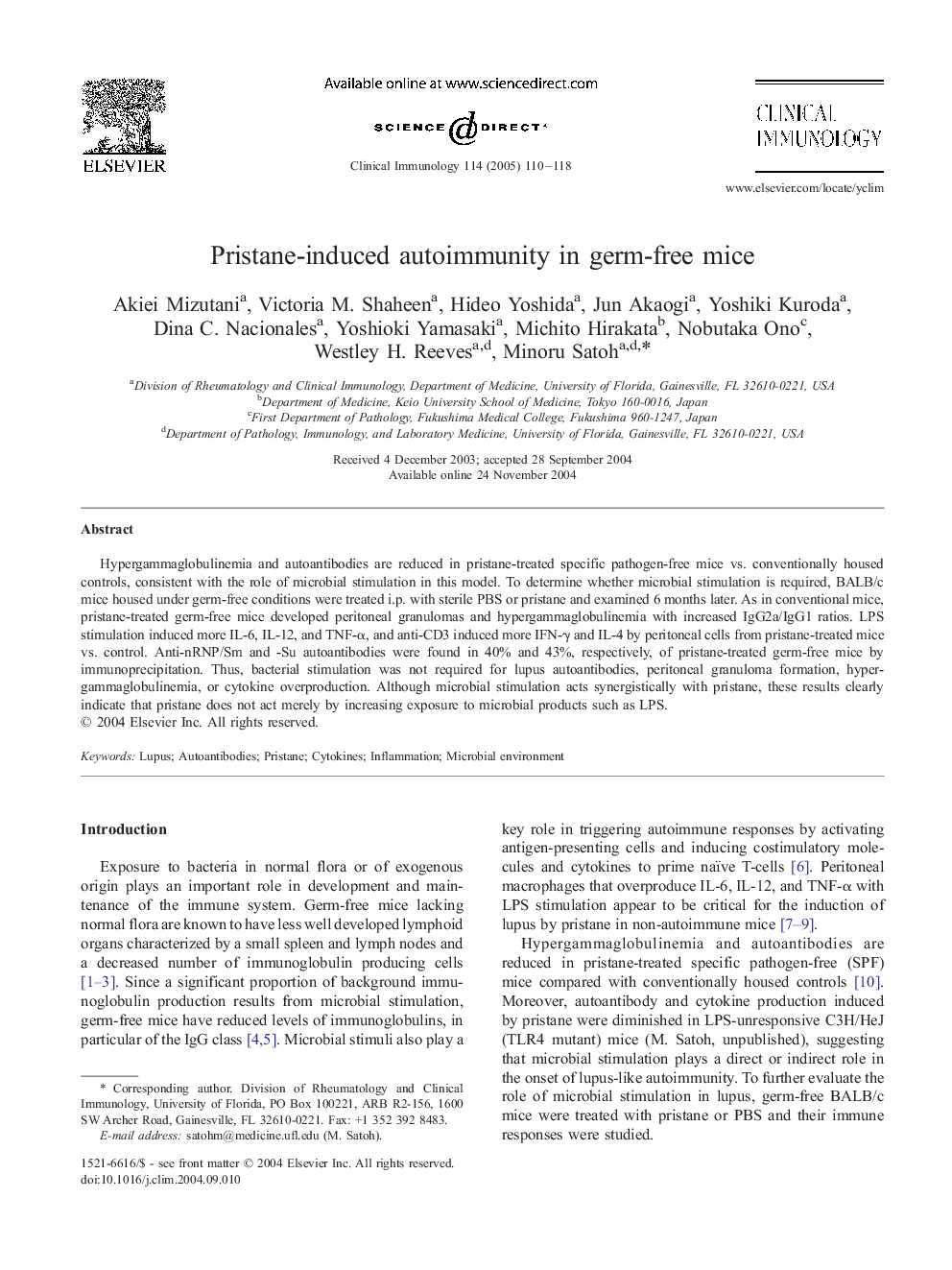| Article ID | Journal | Published Year | Pages | File Type |
|---|---|---|---|---|
| 9236724 | Clinical Immunology | 2005 | 9 Pages |
Abstract
Hypergammaglobulinemia and autoantibodies are reduced in pristane-treated specific pathogen-free mice vs. conventionally housed controls, consistent with the role of microbial stimulation in this model. To determine whether microbial stimulation is required, BALB/c mice housed under germ-free conditions were treated i.p. with sterile PBS or pristane and examined 6 months later. As in conventional mice, pristane-treated germ-free mice developed peritoneal granulomas and hypergammaglobulinemia with increased IgG2a/IgG1 ratios. LPS stimulation induced more IL-6, IL-12, and TNF-α, and anti-CD3 induced more IFN-γ and IL-4 by peritoneal cells from pristane-treated mice vs. control. Anti-nRNP/Sm and -Su autoantibodies were found in 40% and 43%, respectively, of pristane-treated germ-free mice by immunoprecipitation. Thus, bacterial stimulation was not required for lupus autoantibodies, peritoneal granuloma formation, hypergammaglobulinemia, or cytokine overproduction. Although microbial stimulation acts synergistically with pristane, these results clearly indicate that pristane does not act merely by increasing exposure to microbial products such as LPS.
Related Topics
Life Sciences
Immunology and Microbiology
Immunology
Authors
Akiei Mizutani, Victoria M. Shaheen, Hideo Yoshida, Jun Akaogi, Yoshiki Kuroda, Dina C. Nacionales, Yoshioki Yamasaki, Michito Hirakata, Nobutaka Ono, Westley H. Reeves, Minoru Satoh,
